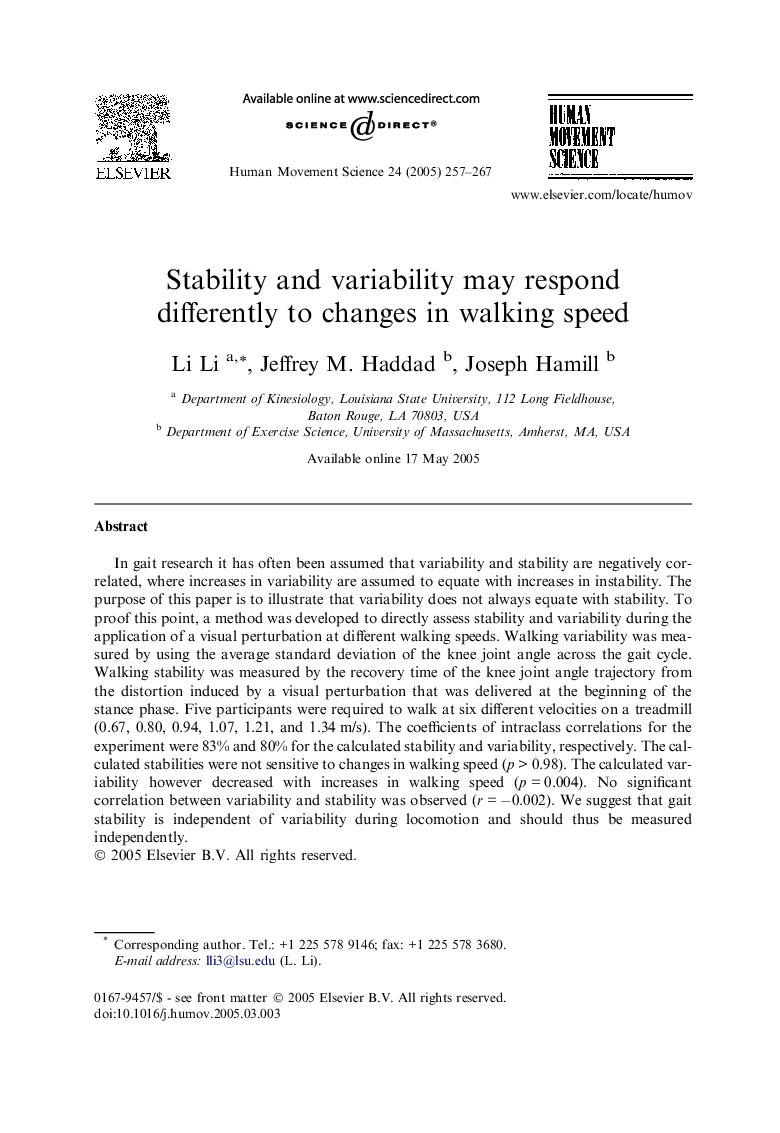| Article ID | Journal | Published Year | Pages | File Type |
|---|---|---|---|---|
| 10459266 | Human Movement Science | 2005 | 11 Pages |
Abstract
In gait research it has often been assumed that variability and stability are negatively correlated, where increases in variability are assumed to equate with increases in instability. The purpose of this paper is to illustrate that variability does not always equate with stability. To proof this point, a method was developed to directly assess stability and variability during the application of a visual perturbation at different walking speeds. Walking variability was measured by using the average standard deviation of the knee joint angle across the gait cycle. Walking stability was measured by the recovery time of the knee joint angle trajectory from the distortion induced by a visual perturbation that was delivered at the beginning of the stance phase. Five participants were required to walk at six different velocities on a treadmill (0.67, 0.80, 0.94, 1.07, 1.21, and 1.34 m/s). The coefficients of intraclass correlations for the experiment were 83% and 80% for the calculated stability and variability, respectively. The calculated stabilities were not sensitive to changes in walking speed (p > 0.98). The calculated variability however decreased with increases in walking speed (p = 0.004). No significant correlation between variability and stability was observed (r = â0.002). We suggest that gait stability is independent of variability during locomotion and should thus be measured independently.
Related Topics
Life Sciences
Neuroscience
Cognitive Neuroscience
Authors
Li Li, Jeffrey M. Haddad, Joseph Hamill,
